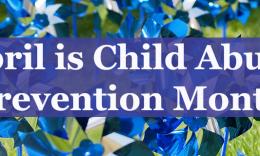Six Tips for Communicating Health & Safety Information

Communicating your current health and safety policies as well as upcoming changes in your children’s area is essential because it builds trust, gets everyone on the same page regarding the guidelines, and provides clarity. Plus, if a new policy or change is well communicated and simple to follow, it will be easier to implement.
Ongoing and effective communication is key for others to understand policy and subsequent changes. By consistently communicating with your team, volunteers, leadership, and families, you can easily address any policy issues that need to change or are difficult to carry out.
Here are six tips for effectively sharing vital information.
- Share your mission before policy – First, families should understand what you are trying to accomplish at the highest level. Then, prioritize relevant and timely information specific to your organization’s needs. This will help others see why the guidelines are necessary and need to be followed.
- Be repetitive – Don’t share a new policy or a change once and think everyone will automatically see and understand it. Instead, put a plan in place to share the information frequently and over a specific period.
- Use various message vehicles – Your children’s area web page, check-in announcements, social media, classroom flyers, newsletters, weekly announcements, colorful signage, text, broadcast emails, and video. The goal is to share the information where people are most likely to see and absorb it.
- Make policy discussion part of onboarding – Don’t wait until a new volunteer is working in their role to share a policy or change. Instead, include new guidelines and details during training and let them know when changes occur, how they can expect to receive the information. The same goes for new families. Include policy information in your introduction to the children’s area or during a basic informational session. Consider creating a booklet or eBook that can be shared and includes health and safety policy details.
- Use the weekly team huddle – An informal ten-minute standing meeting is an excellent way to share a change in guidelines and keep your team up to date. Plan to speak for 3-5 minutes. The rest of the time, take questions or encourage open discussion.
- Create an ethos of health & safety – By building a culture that values communication, encourages transparency, and promotes accountability, your health and safety policies will become second nature to your team and those you serve. Seek input and involvement from staff, volunteers, senior leadership, and families when establishing a violation reporting process that honors confidentiality and anonymity.
Each organization’s communication strategy for health and safety info will be unique and dependent on available resources. However, planning to reach out consistently will foster long-term satisfaction with families and increase longevity with staff and volunteers. People like to be in the know and appreciate when expectations are clear.
For additional child safety resources or to join our growing social community, subscribe to the KidCheck Blog or join us on YouTube, Twitter, Facebook, Pinterest, and Instagram.
Click here to learn more about secure children’s check-in benefits and how it can help your organization attract new families, improve child safety, balance workload, and free you up to do what matters most – connect with families!
Photo by Priscilla Du Preez on Unsplash


